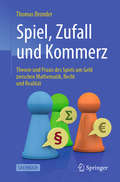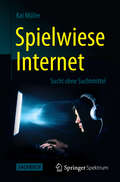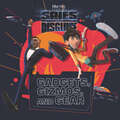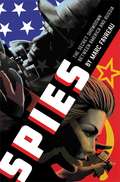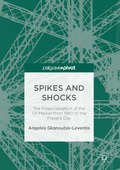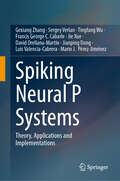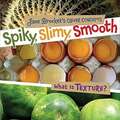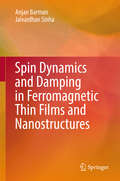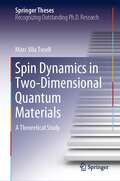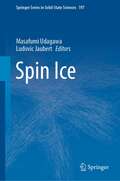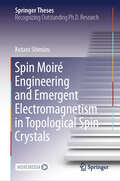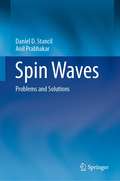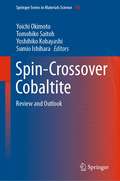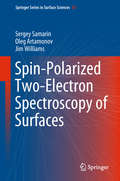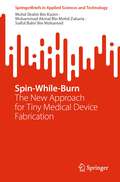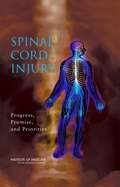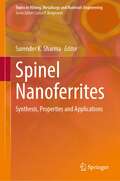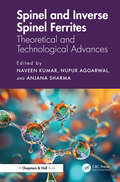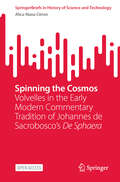- Table View
- List View
Spiel, Zufall und Kommerz: Theorie und Praxis des Spiels um Geld zwischen Mathematik, Recht und Realität
by Thomas BronderDas Spiel mit dem Glück Von Brett- und Kartenspielen über Glücksspielautomaten bis hin zu Lotterien und Wettbüros – dieses Buch ist ebenso breit angelegt wie die Welt des Spiels und zeigt, was all diesen Spielen gemeinsam ist und wie sie wirklich funktionieren. Dabei geht um den Vergleich diverser Spielsysteme anhand wertneutraler Merkmale insbesondere zum Unterschied von Glücks- und Geschicklichkeitsspielen. Wo regieren der Zufall und der Kommerz, wo die Geschicklichkeit? Wie greifen sie ineinander, und welchen rechtlichen Regelungen unterliegt das kommerzielle Spiel? Was macht den besonderen Reiz der Pokerspiele aus? Viele Beispiele zeichnen historische Entwicklungen nach, Zusammenhänge und Gesetze der Wahrscheinlichkeitstheorie werden anschaulich erklärt und lange Spielfolgen bis zum „Point of no return“ bildlich dargestellt. Thomas Bronder räumt außerdem mit vielen Irrtümern, ungenauen Begriffsvorstellungen und Missverständnissen auf, etwa zu Chancengleichheit, Verlusttempo und Auszahlquoten. Vom erfolgreichen Buchmachen über erfolglose Gewinnsysteme bis zu Schneeballsystemen, Falschspiel, Betrug und Manipulation wird kein Thema ausgelassen. So liegt hiermit nun eine kleine „Bibel“ des Spiels um Geld vor, die nicht nur für Spieler, Journalisten und Juristen interessant ist.Die zweite Auflage enthält viele Ergänzungen und Korrekturen mit einem umfangreichen Sachwortverzeichnis zum Nachschlagen. Sie teilt Nullsummenspiele in fünf Klassen ein, beschreibt Besonderheiten beim Pokern und geht auf die Probleme mit Online-Glücksspielen im Internet ein.
Spielwiese Internet: Sucht ohne Suchtmittel
by Kai MüllerInternetsucht ist eine moderne Form einer psychischen Problematik, die offensichtlich immer mehr Menschen etwas angeht, entweder direkt oder indirekt. Wie eine verschwommene Schimäre taucht dieses Schlagwort "Internetsucht" in den Medien auf. Zahlen von Betroffenen, Symptome und Auswirkungen dieses neuen Phänomens werden von unterschiedlichen Experten in unterschiedlicher Weise diskutiert und dennoch bleibt der Nicht-Fachmann nur allzu oft mit mehr Fragen als Antworten zurück. Dieses Buch soll dem Leser einen möglichst umfassenden Einblick vermitteln. Es vermittelt Antworten auf zentrale Fragen, wie z.B.: Was verbirgt sich hinter dem Begriff der Internetsucht? Wann ist ein Verhalten bereits Ausdruck einer Sucht? Welche Menschen sind als besonders gefährdet anzusehen? Welche Maßnahmen können ergriffen werden, um einer Internetsucht zu begegnen? Der aktuelle psychologische Kenntnisstand wurde hierzu nachvollziehbar aufbereitet und in einen engen praxisnahen Bezug gesetzt. Zielgruppen für dieses Werk sind alle, die sich über das Thema Spiel- und Internetsucht informieren möchten sowie alle, die selbst oder in ihrem familiären Umfeld oder Bekanntenkreis Menschen kennen, die davon betroffen sind. Nebenzielgruppe sind alle diejenigen, die im beruflichen Umfeld mit Betroffenen zu tun haben. Der Autor ist Diplompsychologe und arbeitet in der deutschlandweit einzigartigen Ambulanz für Spielsucht. Innerhalb seines beruflichen Umfeldes befasst er sich intensiv mit dem Thema der substanzungebundenen Abhängigkeitserkrankungen (Verhaltenssüchte), hier insbesondere mit der Internet- und Computerspielsucht sowie der Glücksspielsucht.
Spies and Shuttles: NASA's Secret Relationships with the DoD and CIA
by James E. DavidRevealing the connections between NASA and the United States defense communityIn this real life spy saga, James E. David reveals the extensive and largely hidden interactions between NASA and U.S. defense and intelligence departments. The story begins with the establishment of NASA in 1958 and follows the agency through its growth, not only in scope but also in complexity.In Spies and Shuttles, David digs through newly declassified documents to ultimately reveal how NASA became a strange bedfellow to the Department of Defense (DoD) and the Central Intelligence Agency (CIA). He tracks NASA’s early cooperation—supplying cover stories for covert missions, analyzing the Soviet space program, providing weather and other scientific data from its satellites, and monitoring missile tests—that eventually devolved into NASA’s reliance on DoD for political and financial support for the Shuttle. David also examines the restrictions imposed on such activities as photographing the Earth from space and the intrusive review mechanisms to ensure compliance.The ties between NASA and the intelligence community have historically remained unexplored, and David’s riveting book is the first to investigate the twists and turns of this labyrinthine relationship.
Spies in Disguise: Gadgets, Gizmos, and Gear (Spies in Disguise)
by Centum Books LtdSpies in Disguise hits the big screen on December 25, 2019. The all-star cast includes Will Smith, Tom Holland, Karen Gillan, Rashida Jones, and DJ Khaled!Explore the tech world of Spies in Disguise in this action-packed storybook featuring unique gadgets and devices that only Walter could invent.Super spy Lance Sterling and scientist Walter Beckett are almost exact opposites. Lance is smooth, suave and debonair. Walter is... not. But what Walter lacks in social skills he makes up for in smarts and invention, creating the awesome gadgets Lance uses on his epic missions.But when events take an unexpected turn, Walter and Lance suddenly have to rely on each other in a whole new way. And if this odd couple can't learn to work as a team, the whole world is in peril.
Spies: The Secret Showdown Between America and Russia
by Marc FavreauA thrilling account of the Cold War spies and spycraft that changed the course of history, perfect for readers of Bomb and The Boys Who Challenged Hitler.The Cold War spanned five decades as America and the USSR engaged in a battle of ideologies with global ramifications. Over the course of the war, with the threat of mutually assured nuclear destruction looming, billions of dollars and tens of thousands of lives were devoted to the art and practice of spying, ensuring that the world would never be the same.Rife with intrigue and filled with fascinating historical figures whose actions shine light on both the past and present, this timely work of narrative nonfiction explores the turbulence of the Cold War through the lens of the men and women who waged it behind closed doors, and helps explain the role secret and clandestine operations have played in America's history and its national security.
Spikes and Shocks
by Angelos Gkanoutas-LeventisThis book proposes that price volatility and speculation in the oil market originate from a decades-long process of financialisation. The author challenges mainstream critical accounts of the market that typically invoke the notion of a global oil shortage and so-called 'peak oil' arguments. Instead, he argues that the development of the market has been punctuated by recurring oil price shocks. Chapters examine the evolution of the international oil market and investigate how, and to what effect, the process of financialisation has transformed the structure and dynamics of the global oil market from 1980 to the present day. In doing so, the book suggests that the process of financialisation is both the cause and the proof of a profound change in the structure of the global oil market, that has turned the triangle of producers, consumers, and mediators that characterised the oil market until the 1980s into a four-tier structure through the addition of financial actors.
Spiking Neural P Systems: Theory, Applications and Implementations
by Tingfang Wu Gexiang Zhang Sergey Verlan Mario J. Pérez-Jiménez Jie Xue Francis George Cabarle David Orellana-Martín Jianping Dong Luis Valencia-CabreraSpiking neural P systems represent a significant advancement in the field of membrane computing, drawing inspiration from the communication patterns observed in neurons. Since their inception in 2006, these distributed and parallel neural-like computing models have gained popularity and emerged as important tools within the membrane computing area. As a key branch of the third generation of artificial neural networks, a fascinating research area of artificial intelligence, spiking neural P systems offer a captivating blend of theoretical elegance and practical utility. Their efficiency, Turing completeness, and real-life application characteristics, including interpretability and suitability for large-scale problems, have positioned them at the forefront of contemporary research in membrane computing and artificial intelligence. This state-of-the-art reference work is organized into three parts comprising twelve chapters. It thoroughly investigates the theoretical foundations, real-life applications, and implementations of spiking neural P systems. From fundamental principles to computational power and complexity, the theoretical aspects are explored, laying the groundwork for understanding their practical applications. Real-life applications span a diverse range of domains, including complex optimization, classification, fault diagnosis, medical image processing, information fusion, cryptography, and robot control. Additionally, the book discusses several software and hardware implementations that provide valuable insights into the practical deployment of spiking neural P systems. As the rapid development of spiking neural P systems continues to unfold, there is an increasing demand for a systematic and comprehensive summary of their capabilities and applications. This work serves as an invaluable resource for researchers, scholars, and practitioners interested in the theoretical underpinnings, algorithms, and practical implementation of artificial intelligence and membrane computing.
Spiky, Slimy, Smooth: What Is Texture?
by Jane BrocketIntroduces the concept of texture and how it can be determined through touch, and identifies objects with different types of textures, including fluffy slippers, sticky jam, and spiky cacti.
Spillover and Feedback Effects in Low Carbon Development
by Youguo ZhangThis book studies the pathways and policies of regional coordinated low carbon development from the perspective of regional spillover-feedback effects. How do regional economies interact with carbon emission? This phenomena, also known as spillover-feedback effects, is explained in depth with reference to datasets and real examples. As China adopts zero-carbon emissions policies within the context of regional disparities, this theoretical construct is gaining utility, and in this book, climate science researchers and political scientists will find it explicated as never before.
Spin Dynamics and Damping in Ferromagnetic Thin Films and Nanostructures
by Anjan Barman Jaivardhan SinhaThis book provides a comprehensive overview of the latest developments in the field of spin dynamics and magnetic damping. It discusses the various ways to tune damping, specifically, dynamic and static control in a ferromagnetic layer/heavy metal layer. In addition, it addresses all optical detection techniques for the investigation of modulation of damping, for example, the time-resolved magneto-optical Kerr effect technique.
Spin Dynamics in Two-Dimensional Quantum Materials: A Theoretical Study (Springer Theses)
by Marc Vila TusellThis thesis focuses on the exploration of nontrivial spin dynamics in graphene-based devices and topological materials, using realistic theoretical models and state-of-the-art quantum transport methodologies. The main outcomes of this work are: (i) the analysis of the crossover from diffusive to ballistic spin transport regimes in ultraclean graphene nonlocal devices, and (ii) investigation of spin transport and spin dynamics phenomena (such as the (quantum) spin Hall effect) in novel topological materials, such as monolayer Weyl semimetals WeTe2 and MoTe2. Indeed, the ballistic spin transport results are key for further interpretation of ultraclean spintronic devices, and will enable extracting precise values of spin diffusion lengths in diffusive transport and guide experiments in the (quasi)ballistic regime. Furthermore, the thesis provides an in-depth theoretical interpretation of puzzling huge measured efficiencies of the spin Hall effect in MoTe2, as well as a prediction of a novel canted quantum spin Hall effect in WTe2 with spins pointing in the yz plane.
Spin Ice (Springer Series in Solid-State Sciences #197)
by Masafumi Udagawa Ludovic JaubertThis book deals with a new class of magnetic materials, spin ice. Spin ice has become the canonical example of modern frustrated magnetism where competing interactions between spins set the rules for an emergent magnetostatic gauge field theory. Excitations take the form of magnetic monopoles or can condense via a Higgs mechanism. Beyond classical spin ice, the book describes the new physics emerging when quantum coherence (spin liquids, photon-like excitations) and itinerant electrons (anomalous Hall effect) are included in artificial systems. This first book dedicated to spin ice is a review of the current understanding of the field, both on the theoretical and experimental levels, written by leading experts. The book is written in a linear way with very few prerequisites. It also contains textbook-like descriptions of theoretical methods to help advanced students and researchers to enter the field.
Spin Moiré Engineering and Emergent Electromagnetism in Topological Spin Crystals (Springer Theses)
by Kotaro ShimizuThis book provides a comprehensive theoretical investigation into the engineering of topological properties, emergent electromagnetic phenomena, and magnetic and electrical functionalities of materials associated with topological spin textures. Topological spin textures in bulk magnets such as skyrmions form their periodic arrangements called topological spin crystals. They exhibit unique magnetic properties and quantum transport phenomena due to their noncollinear and noncoplanar spin textures. One of the challenging problems in these magnets is flexible generation, annihilation, and control of the spin textures with different topology, leading to their novel functionality useful for next-generation devices. Although such a problem has been discussed in several specific cases, a generic viewpoint was missing in the previous works. To facilitate the systematic discussion on the control of the topological spin textures, the author proposes the &“spin moiré&” picture, taking particular note of the observation that topological spin crystals are often represented as superpositions of multiple spin density waves. Moiré is an interference fringe generated by a superposition of waves and it exhibits the periodicity different from the superposed waves. Importantly, a variety of moiré patterns are realized in many ways by changing a number of parameters, e.g., periods, amplitudes, phases, propagating directions, and the number of superposed waves. Given the analogy with the conventional moiré patterns, one can conceive a further variety of spin patterns and their continuous modulations by regarding the topological spin crystals as moiré patterns of the vector (spinor) fields. Given the growing recognition of topology's significance in describing the state of matter, especially in magnetic materials, the findings presented in this book establish a versatile framework for controlling topological magnetism, which does not only advance the fundamental understanding of topological properties in magnets but also opens new pathways for exploring emergent electromagnetic phenomena and designing magnetic functionalities. Intended for students and researchers in the fields of condensed matter physics and material science, this book serves as a valuable resource for those interested in fundamental theory and advanced discussions of topological magnetism and its control.
Spin Physics in Semiconductors
by Mikhail I. DyakonovThe purpose of this collective book is to present a non-exhaustive survey of sp- related phenomena in semiconductors with a focus on recent research. In some sense it may be regarded as an updated version of theOpticalOrientation book, which was entirely devoted to spin physics in bulk semiconductors. During the 24 years that have elapsed, we have witnessed, on the one hand, an extraordinary development in the wonderful semiconductor physics in two dim- sions with the accompanying revolutionary applications. On the other hand, during the last maybe 15 years there was a strong revival in the interest in spin phen- ena, in particular in low-dimensional semiconductor structures. While in the 1970s and 1980s the entire world population of researchers in the ?eld never exceeded 20 persons, now it can be counted by the hundreds and the number of publications by the thousands. This explosive growth is stimulated, to a large extent, by the hopes that the electron and/or nuclear spins in a semiconductor will help to accomplish the dream of factorizing large numbers by quantum computing and eventually to develop a new spin-based electronics, or "spintronics". Whether any of this will happen or not, still remains to be seen. Anyway, these ideas have resulted in a large body of interesting and exciting research, which is a good thing by itself. The ?eld of spin physics in semiconductors is extremely rich and interesting with many spectacular effects in optics and transport.
Spin Waves: Problems and Solutions
by Daniel D. Stancil Anil PrabhakarThis book presents a collection of problems in spin wave excitations with their detailed solutions. Each chapter briefly introduces the important concepts, encouraging the reader to further explore the physics of spin wave excitations and the engineering of spin wave devices by working through the accompanying problem sets. The initial chapters cover the fundamental aspects of magnetization, with its origins in quantum mechanics, followed by chapters on spin wave excitations, such as the magnetostatic approximation, Walker's equation, the spin wave manifold in the three different excitation geometries of forward volume, backward volume and surface waves, and the dispersion of spin waves. The latter chapters focus on the practical aspects of spin waves and spin wave optical devices and use the problem sets to introduce concepts such as variational analysis and coupled mode theory. Finally, for the more advanced reader, the book covers nonlinear interactions and topics such as spin wave quantization, spin torque excitations, and the inverse Doppler effect. The topics range in difficulty from elementary to advanced. All problems are solved in detail and the reader is encouraged to develop an understanding of spin wave excitations and spin wave devices while also strengthening their mathematical, analytical, and numerical programming skills.
Spin the Golden Light Bulb (The Crimson Five #1)
by Jackie YeagerIt’s the year 2071 and eleven year-old Kia Krumpet is determined to build her 67 inventions, but she won't have the opportunity to unless she earns a spot at PIPS, the Piedmont Inventor’s Prep School. Kia, who has trouble making friends at school, has dreamed of winning the Piedmont Challenge and attending PIPS ever since she learned that her Grandma Kitty won the very first Piedmont Challenge. After she and four of her classmates are selected to compete for a spot at PIPS, they travel by aero-bus to Camp Piedmont to solve a task against forty-nine other state teams to earn their place at the best inventor's school in the country.
Spin-Crossover Cobaltite: Review and Outlook (Springer Series in Materials Science #305)
by Sumio Ishihara Yoichi Okimoto Tomohiko Saitoh Yoshihiko KobayashiThis book describes the history of and recent developments in cobaltite and the spin-crossover (SC) phenomena. It offers readers an overview of essential research conducted on cobaltite and introduces them to the fundamentals of condensed matter physics research.The book consists of two parts. The first part reviews SC phenomena, covering the fundamental physics of SC phenomena and basic material properties of cobaltite. The second part focuses on recent topics in SC cobaltite, including the optical and dynamical features of cobaltite, thin material fabrication, and thermoelectric properties. The comprehensive coverage and clearly structured topics will especially appeal to newcomers to the field of state-of-the-art research on cobaltite and SC physics.
Spin-Polarized Two-Electron Spectroscopy of Surfaces (Springer Series in Surface Sciences #67)
by Sergey Samarin Oleg Artamonov Jim WilliamsThis book presents developments of techniques for detection and analysis of two electrons resulting from the interaction of a single incident electron with a solid surface. Spin dependence in scattering of spin-polarized electrons from magnetic and non-magnetic surfaces is governed by exchange and spin-orbit effects. The effects of spin and angular electron momentum are shown through symmetry of experimental geometries: (i) normal and off normal electron incidence on a crystal surface, (ii) spin polarization directions within mirror planes of the surface, and (iii) rotation and interchange of detectors with respect to the surface normal. Symmetry considerations establish relationships between the spin asymmetry of two-electron distributions and the spin asymmetry of Spectral Density Function of the sample, hence providing information on the spin-dependent sample electronic structure. Detailed energy and angular distributions of electron pairs carry information on the electron-electron interaction and electron correlation inside the solid. The “exchange – correlation hole” associated with Coulomb and exchange electron correlation in solids can be visualized using spin-polarized two-electron spectroscopy. Also spin entanglement of electron pairs can be probed. A description of correlated electron pairs generation from surfaces using other types of incident particles, such as photons, ions, positrons is also presented.
Spin-While-Burn: The New Approach for Tiny Medical Device Fabrication (SpringerBriefs in Applied Sciences and Technology)
by Saiful Bahri Mohamed Mohd Shahir Kasim Muhammad Akmal ZakariaThis book explains the challenges and advancements in cutting precise cylindrical shapes on difficult materials through spark erosion. Titled "Spin while Burn," it addresses the drawbacks associated with this process, including unsatisfactory surface finish and limited productivity. Despite utilizing advanced computing and statistical optimization methods, achieving the ideal balance between material removal rate (MRR) and surface quality remains elusive. In response, the book introduces a hybrid ultrasonic-assisted approach in the wire electrical discharge turning (WEDT) process. By integrating a rotating workpiece with ultrasonic vibration, the authors evaluate its impact on MRR and surface finish. Through meticulous design experiments and statistical analysis, they explore various cutting parameters and machining paths. The book highlights the characterization of machined surfaces through elemental analysis and surface morphology evaluations. The results demonstrate the positiveeffects of integrating ultrasonic vibration into WEDT, even without optimized ultrasonic parameters. By reducing electrode wire debris and employing multi-objective parameter optimization using the genetic algorithm, significant improvements are achieved in MRR and surface roughness compared to conventional WEDT. "Spin while Burn" consists of five chapters, delving into the challenges, history, principles, performance, and future perspectives of the Spin-while-Burn process in manufacturing. This comprehensive book offers valuable insights into enhancing surface quality and productivity in the cutting of precise cylindrical shapes on challenging materials through spark erosion.
Spinal Cord Injury: Progress, Promise, and Priorities
by Institute of Medicine of the National AcademiesAn estimated 11,000 spinal cord injuries occur each year in the United States and more than 200,000 Americans suffer from maladies associated with spinal cord injury. This includes paralysis, bowel and bladder dysfunction, sexual dysfunction, respiratory impairment, temperature regulation problems, and chronic pain. During the last two decades, longstanding beliefs about the inability of the adult central nervous system to heal itself have been eroded by the flood of new information from research in the neurosciences and related fields. However, there are still no cures and the challenge of restoring function in the wake of spinal cord injuries remains extremely complex. Spinal Cord Injury examines the future directions for research with the goal to accelerate the development of cures for spinal cord injuries. While many of the recommendations are framed within the context of the specific needs articulated by the New York Spinal Cord Injury Research Board, the Institute of Medicine's panel of experts looked very broadly at research priorities relating to future directions for the field in general and make recommendations to strengthen and coordinate the existing infrastructure. Funders at federal and state agencies, academic organizations, pharmaceutical and device companies, and non-profit organizations will all find this book to be an essential resource as they examine their opportunities.
Spinel Nanoferrites: Synthesis, Properties and Applications (Topics in Mining, Metallurgy and Materials Engineering)
by Surender K. SharmaThis book highlights the complexity of spinel nanoferrites, their synthesis, physio-chemical properties and prospective applications in the area of advanced electronics, microwave devices, biotechnology as well as biomedical sciences. It presents an overview of spinel nanoferrites: synthesis, properties and applications for a wide audience: from beginners and graduate-level students up to advanced specialists in both academic and industrial sectors. There are 15 chapters organized into four main sections. The first section of the book introduces the readers to spinel ferrites and their applications in advanced electronics industry including microwave devices, whereas the second section mainly focus on the synthesis strategy and their physio-chemical properties. The last sections of the book highlight the importance of this class of nanomaterials in the field of biotechnology and biomedical sector with a special chapter on water purification.
Spinel and Inverse Spinel Ferrites: Theoretical and Technological Advances
by Naveen Kumar, Nupur Aggarwal, and Anjana SharmaThis comprehensive book explores spinel and inverse spinel ferrites, focusing on their synthesis methods, structural characteristics, magnetic properties, and diverse applications. It offers a valuable resource for understanding how these materials are transforming fields such as electronics, energy conversion, sensing, biomedicine, agriculture, and environmental management. The book provides practical insights into synthesis methods, fabrication techniques, and the scale-up processes required to move these materials toward commercial applications. With a focus on recent advancements such as nanoscale engineering and surface modifications, the book offers readers insights into the commercial and practical potential of these materials across various industries. Delivers practical guidance on the synthesis, fabrication, and scale-up of these materials, addressing their commercialization prospects. Examines the role of spinel and inverse spinel ferrites in magnetic resonance imaging (MRI), exploring their applications in medical diagnostics and treatment. Discusses their effectiveness in electromagnetic interference (EMI) shielding, emphasizing the importance of ferrites in electronic and telecommunication devices. Provides insights into the application of ferrites as sensors, with a focus on their use in gas sensing, biosensing, and other diagnostic tools. Highlights photocatalytic activity and environmental remediation, showcasing how these materials help in pollution control, water purification, and sustainable energy solutions. This reference book is for students, researchers, and professionals in physics, materials science, and engineering who wish to deepen their understanding of spinel and inverse spinel ferrites and their interdisciplinary applications.
Spinning the Cosmos: Volvelles in the Early Modern Commentary Tradition of Johannes de Sacrobosco’s De Sphaera (SpringerBriefs in History of Science and Technology)
by Alica-Nana CitronThis open access book investigates the epistemological concept of and the knowledge transfer interwoven with the moveable paper wheels found in medieval and early modern books—the so-called &“volvelles.&” The earliest known volvelles emerged in the mid-thirteenth century and were cut out and installed by the reader, often appearing in books dealing with astronomical subjects. The brain processes and remembers images more easily than words—the so-called &“picture superiority effect&”—especially if the images move, making volvelles a useful method to help students of the Quadrivium memorizing the heavenly movements, thus the composition of a device embedded within a text promises a comprehensive insight into the didactic concepts of early modern knowledge transfer. The Tractatus de Sphaera by Johannes de Sacrobosco (1195–1256), the standard university textbook for astronomy from the thirteenth until the seventeenth century, was particularly noted as containing volvelles of different kinds. The project &“The Sphere,&” located at the Max Planck Institute for the History of Science in Berlin, has collected a corpus of 359 printed De sphaera editions, building a promising basis for examining different volvelles and placing the results in a cultural context. These volumes had never been analyzed in detail before, nor was there such a large corpus that could provide a quantitative database for such an investigation. The results of the book show that a book and knowledge tradition as widespread as that of the Sphaera contained more than one third of volvelles and was used in university teaching in the early modern period. For historians, this sheds light on a new aspect of movable paper instruments in university didactics and book history in the early modern period.
Spintronic Materials and Technology
by Y B Xu S M ThompsonFew books exist that cover the hot field of second-generation spintronic devices, despite their potential to revolutionize the IT industry.Compiling the obstacles and progress of spin-controlled devices into one source, Spintronic Materials and Technology presents an in-depth examination of the most recent technological spintronic developmen
Spintronics
by Claudia Felser Gerhard H FecherSpintronics is an emerging technology exploiting the spin degree of freedom and has proved to be very promising for new types of fast electronic devices. Amongst the anticipated advantages of spintronics technologies, researchers have identified the non-volatile storage of data with high density and low energy consumption as particularly relevant. This monograph examines the concept of half-metallic compounds perspectives to obtain novel solutions and discusses several oxides such as perovskites, double perovskites and CrO2 as well as Heusler compounds. Such materials can be designed and made with high spin polarization and, especially in the case of Heusler compounds, many material-related problems present in current-day 3d metal systems, can be overcome. Spintronics: From Materials to Devices provides an insight into the current research on Heusler compounds and offers a general understanding of structure-property relationships, including the influence of disorder and correlations on the electronic structure and interfaces. Spintronics devices such as magnetic tunnel junctions (MTJs) and giant magnetoresistance (GMR) devices, with current perpendicular to the plane, in which Co2 based Heusler compounds are used as new electrode materials, are also introduced. From materials design by theoretical methods and the preparation and properties of the materials to the production of thin films and devices, this monograph represents a valuable guide to both novices and experts in the fields of Chemistry, Physics, and Materials Science.
